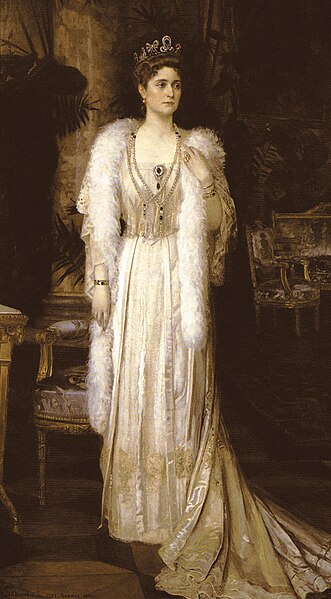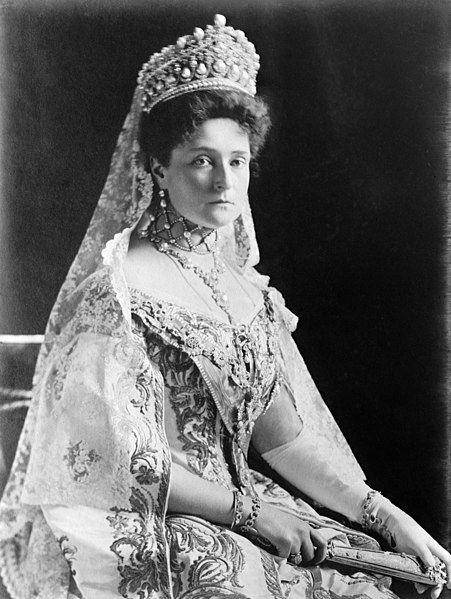The Mosaic egg is a jewelled enameled Easter egg made under the supervision of the Russian jeweller Peter Carl Fabergé in 1914. The egg was made for Nicholas II of Russia, who presented it to his wife, the Empress Alexandra Feodorovna.
The Egg was crafted by Albert Holmström (1876–1925) under the supervision of Peter Carl Fabergé and is made of yellow gold, platinum, brilliant diamonds, rose-cut diamonds, ruby, emerald, topaz, sapphire, garnet, half-pearls, moonstone, white enamel and opaque pink enamel. It consists of a series of yellow gold belts which are pave-set with diamonds and a variety of gems in a floral pattern, providing a look of petit point tapestry work. The pattern contains five oval panels bordered by half-pearls set in enamel, with brilliant diamonds placed at each intersection. At the apex of the egg is a moonstone through which can be seen Empress Alexandra's initials in Russian characters. The floral tapestry pattern was designed by Alma Pihl, who was inspired by needlework fire screens found in aristocratic sitting rooms of the time.
image and text via



Ευχαριστώ και πάλι!! Καλή συνέχεια!!
ReplyDeleteΚαλό βράδυ!
Φιλιά!
an amazing artwork, wonderful!
ReplyDeletethanks!
If ever I would get an assignment to produce something so beautiful and valuable. I wonder what it is worth.
ReplyDelete